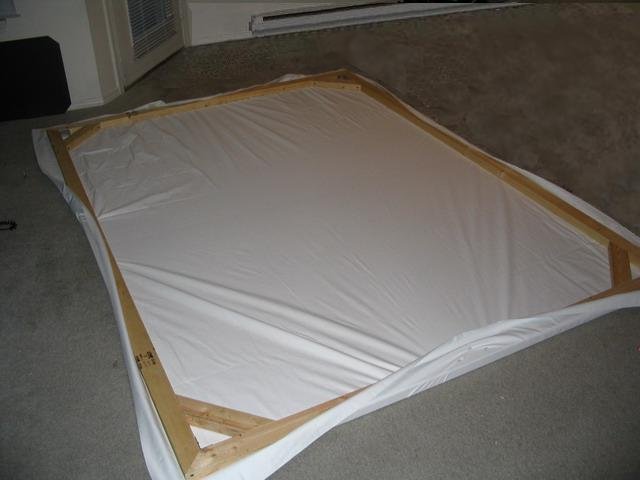 |
With the frame complete, the next step is to attach the
screen material. It
comes wadded up into a tiny package, which sucks because it puts some serious
wrinkles into the material:

[Note from the webmaster: If you don't need a screen higher than 54" (96"x54" is a popular size),
you can purchase blackout drapery of any length on 54" bolts from just about any
fabric store. As an added bonus, it won't have any creases in it which may be
hard to get out. Note that you can actually make a screen with a display area
54" high even though the material itself is only 54" high - the material is
elastic enough to stretch an extra couple of inches required for stapling].
The material has two sides, one with a soft texture, and one with a
canvas-like texture. I decided that I wanted the soft side to be the projection
surface, since the canvas side had a very visible texture to it. I laid the
material on the floor, soft side down, then laid the frame on top of it,
centered as close as I could get it:

Getting rid of the wrinkles in the material means stretching it tight. Really
tight. My rule of thumb was to pull it until I thought it was tight enough, then
pull it a bit more. It's pretty tough stuff - I never managed to tear it. The
basic procedure for stretching is to start on one of the long sides, then move
to the opposite side, then do the short sides the same way. Repeat the whole
process, moving outwards from the center of each side, and always stapling
opposite sides as mirror images of each other.
First the long sides:

...then the short sides:


|
|






